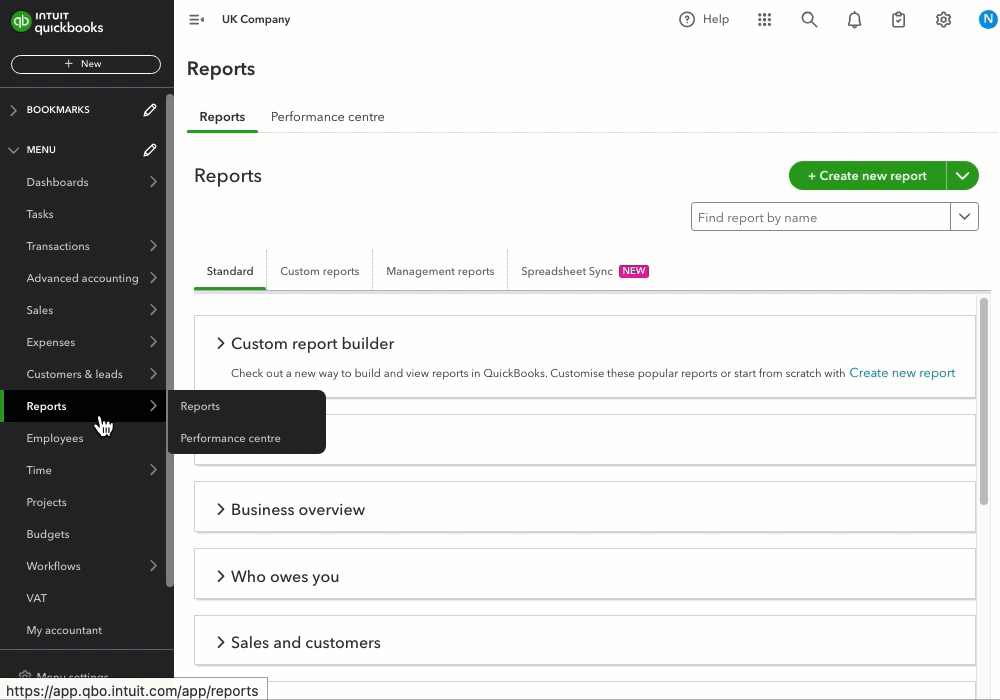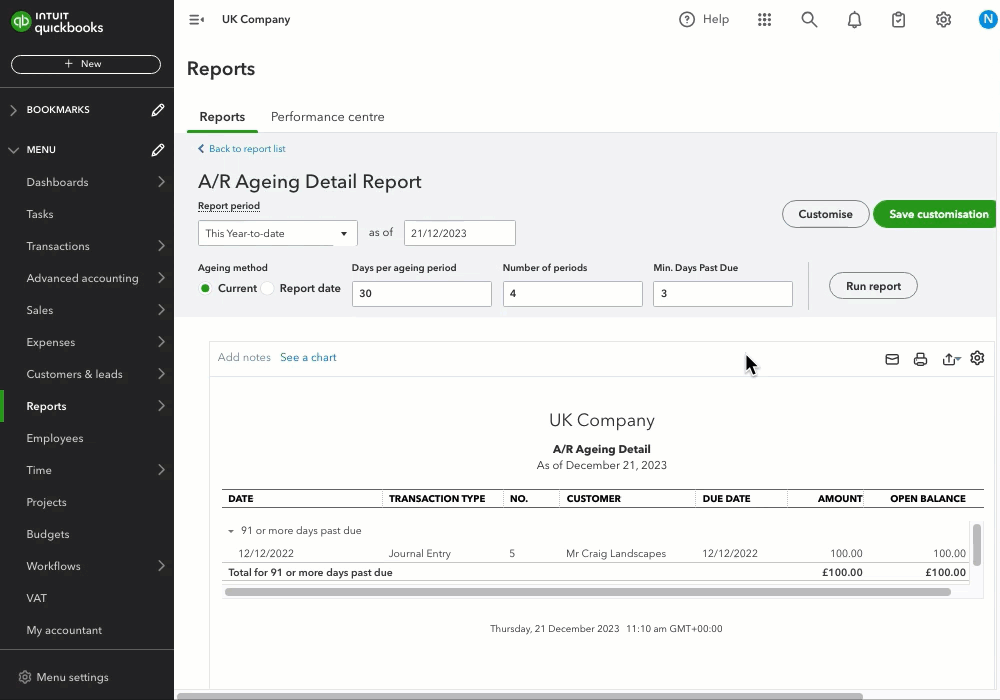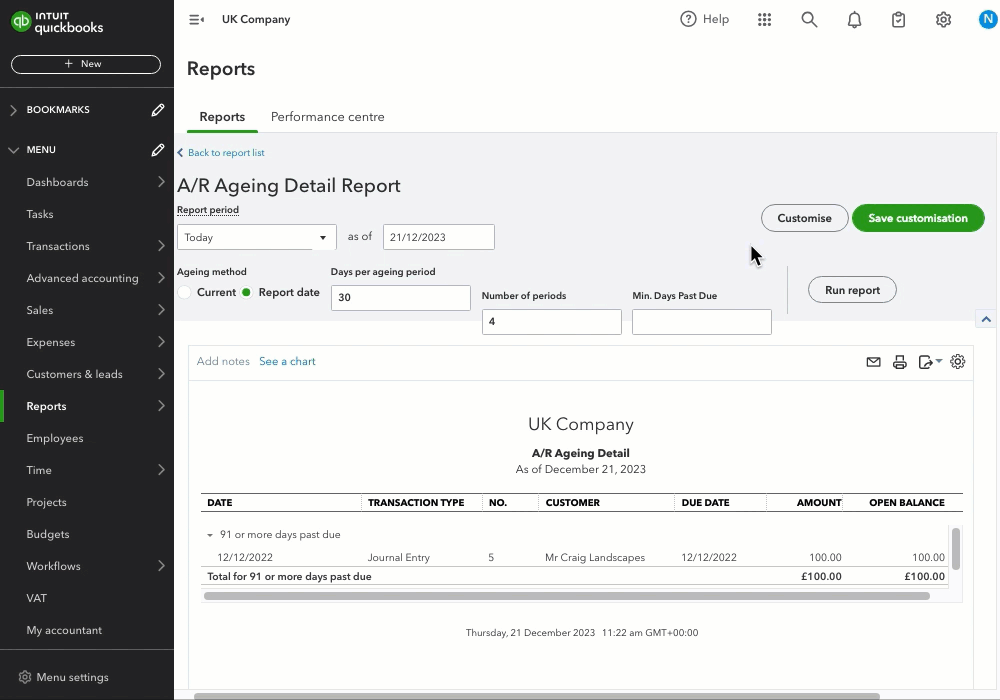Ageing reports give you an overview of your customers' outstanding balances, who are falling behind their payments, how much is still due, and how long they’re past due.
There are two reports available: the Accounts Receivable Ageing Summary and the Accounts Receivable Ageing Detail report. We will guide you on when and how to use each of them.
| Some of your reports will look different depending on whether they're in the classic view or |
Accounts receivable ageing summary report
You can run this report to see the total outstanding balances and how long they’re past due.

- Go to Reports (Take me there).
- In the Who owes you section, select Accounts receivable ageing summary.
- Customise the report as needed:
| Report period | Date (or time range) the report covers. |
| Show non-zero or active only | Select Active to hide empty rows or columns. Select Non-zero to also hide ones where the total is zero. Select All to show all rows or columns. |
| Ageing method | To categorise outstanding receivables by days past due, you can use two methods: - Current (based on today’s date). - Report date (based on a specific date). |
| Days per ageing period | The number of days assigned to each specific period. Typically, these periods are defined as 30 days each, such as 30 days, 60 days and 90 days. |
| Number of periods | There are four periods: 1-30 days, 31-60 days, 61-90 days, and 91 and Over. |
- Select Run report.
Accounts receivable ageing detail report
This report gives you specific customer balances and the duration of each overdue transaction.

- Go to Reports (Take me there).
- In the Who owes you section, select Accounts receivable ageing detail.
- Customise the report as needed.
| Report period | Date (or time range) the report covers. |
| Ageing method | How to categorise outstanding receivables by days past due. To categorise outstanding receivables by days past due, you can use two methods: - Current (based on today’s date). - Report date (based on a specific date). |
| Days per ageing period | The number of days assigned to each specific period. Typically, these periods are defined as 30 days each, such as 30 days, 60 days and 90 days. |
| Number of periods | There are four periods: 1-30 days, 31-60 days, 61-90 days, and 91 and Over. |
| Min. Days Past Due | Show balances beyond the set past due days. |

- If you want to see how long each transaction is past due:
- Select Customise.
- In the Rows/Columns section, select the Past Due checkbox. This is optional.
- Select Run report.

- To see the Outstanding VAT column in your report:
- Select the Gear icon.
- Then, select the Outstanding VAT checkbox to add the column to your report.